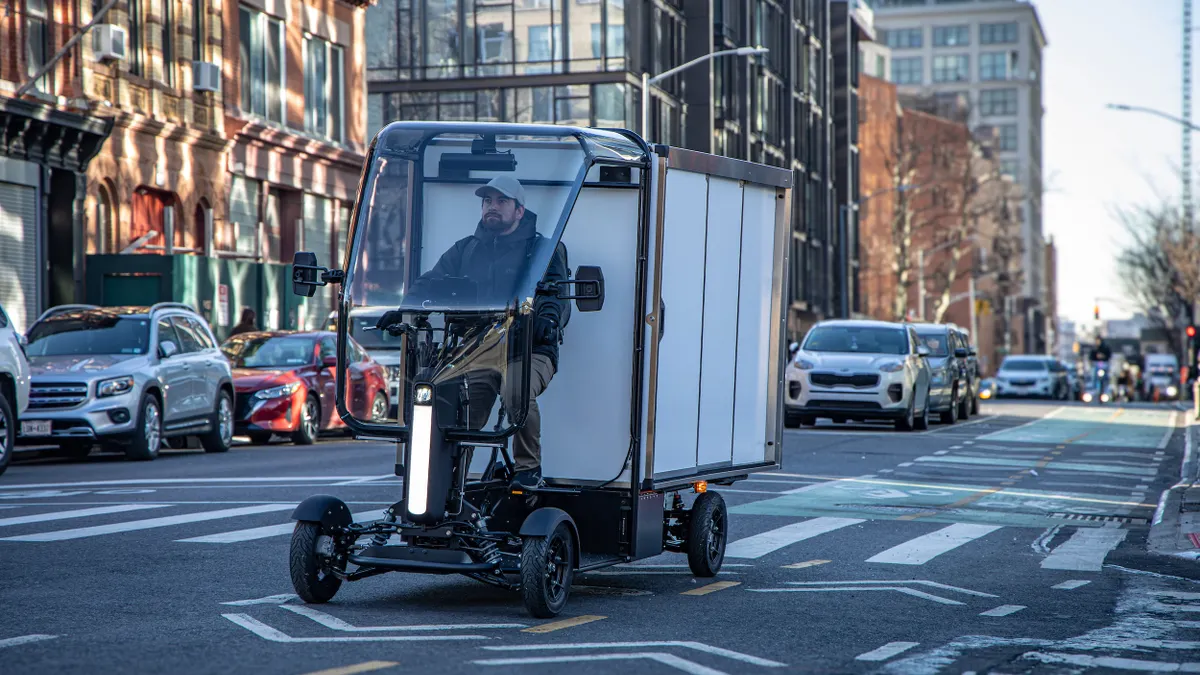Dive Brief:
- Land-use reform could reduce local planet-warming emissions by an average of up to 14%, compared with business-as-usual development patterns, in three of the U.S.’s fastest-growing cities — Austin, Texas; Denver and Charlotte, North Carolina — according to a report released April 12 by RMI, a nonprofit advocacy organization.
- The report said these cities could, on average, reduce vehicle miles traveled up to 13% and building energy use up to 16% through the suggested reforms such as removing multifamily housing zoning restrictions, developing housing on underutilized land and building taller residential buildings and commercial clusters near high-quality transit.
- Ben Holland, who manages RMI’s urban transformation initiative, said in an interview that he hopes the report “inspires a bit more analysis at the city level, with policymakers saying ‘Hey, housing policy is climate policy.’”
Dive Insight:
As cities nationwide grapple with housing and climate crises, some researchers are examining how land-use decisions could play a role in addressing these challenges.
“Simply put, the United States cannot reach its [greenhouse gas] reduction targets if our urban areas continue to grow as they have in the past,” according to a Brookings Metro 2021 report. “After decades of sprawl, the U.S. has the dubious honor of being a world leader in both building-related energy consumption and vehicle miles traveled per capita.”
Regional estimates find that 70% to 90% of residential land in U.S. cities is typically reserved for detached single-family homes, in which occupants use 64% more energy on average than occupants of attached and multifamily homes, the new RMI report says.
It is crucial to reduce the time people spend in their cars, the report says, because even if there are 70 million electric vehicles on U.S. roads by 2030, the number of miles driven still needs to decrease by 20% per capita to meet transportation emissions reduction goals, according to RMI.
The report says land-use reform could also reduce cities’ water consumption — a particularly salient issue as a shrinking Colorado River threatens water supply in the Southwest.
To address equity, cities should pair the suggested land-use reforms with affordable housing subsidies for the most vulnerable residents and measures to prevent housing displacement, the report says.
The report points out what it describes as a “more subtle flaw in many climate action plans”: Cities often set targets to reduce total emissions, rather than per-person emissions. Even if increased housing in dense cities pushes the U.S.’s overall emissions down, the city’s emissions will increase because more people live there.
“This means that the conventional approaches used to develop city climate action plans are unable to show the benefits of building more housing within cities, and thus new housing is often ignored or underprioritized as an element of these plans relative to its importance,” the report says.
The report acknowledges that even if an area is upzoned, meaning restrictions on multifamily housing are removed, only a portion of the parcels would be developed in a given time due to real-world constraints such as private landowner decisions. That means more parcels need to be upzoned to “realize the level of development modeled here,” the report says.
The report’s analysis of the impacts of land-use reforms also “assumes that there would be some policies in place that would limit future sprawl development,” RMI’s Holland said.














